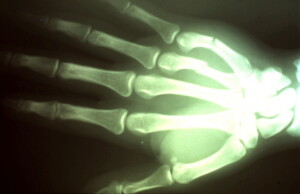ORIF 4th & 5th MC Fracture
A fracture is a partial or complete break in the bone. When a fracture occurs, it is classified as either open or closed: An open fractures (compound fracture) is when the the bone exits and is visible through the skin, or a deep wound that exposes the bone through the skin. A closed fracture (simple fracture) is when the bone is broken, but the skin is intact.
Fractures have a variety of names. Below is a listing of the common types that may occur: Greenstick – this is an incomplete fracture. A portion of the bone is broken, causing the other side to bend; Transverse – the break is in a straight line across the bone; Spiral – the break spirals around the bone, common in a twisting injury; Oblique – the break is diagonal across the bone.
Fractures of the hand bones can be taken care of in a variety of ways but all require a period of immobilization so there is no motion at the fracture site so the bone can heal. Different methods of immobilization are possible i.e., non-operative methods such as splinting or casting and operative methods using materials such as pins, wires plates and screws to hold the fracture fragments in place. All these methods have their relative risks and benefits.
Open reduction internal fixation (ORIF) refers to operative treatment where the fracture is directly visualized and the fracture is anatomically reduced and rigidly fixated. The benefit of this treatment is primary bone healing and ability to begin hand therapy and rehabilitation much sooner than other methods of immobilization.
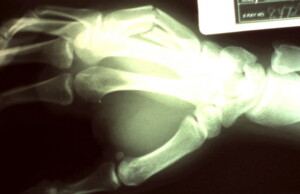 Lateral x-ray revealing a transverse fracture with dorsal apical angulation of the shaft of the right 4th and 5th metacarpals (MC).
Lateral x-ray revealing a transverse fracture with dorsal apical angulation of the shaft of the right 4th and 5th metacarpals (MC).
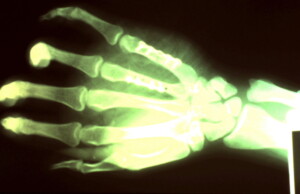 Intra-operative view following open reduction internal fixation. A 5 hole plate with 4 screws was used for the little finger and a four hole plate with four screws was used on the ring finger. Anatomic reduction was achieved.
Intra-operative view following open reduction internal fixation. A 5 hole plate with 4 screws was used for the little finger and a four hole plate with four screws was used on the ring finger. Anatomic reduction was achieved.
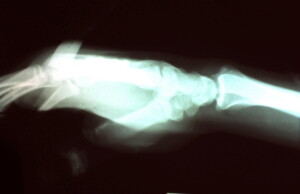 Lateral post-op view showing correction of the dorsal apical angulation.
Lateral post-op view showing correction of the dorsal apical angulation.
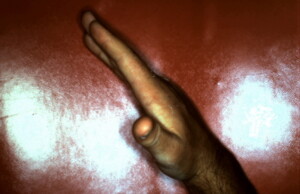 Early post-operative (4wks) result with near full extension.
Early post-operative (4wks) result with near full extension.
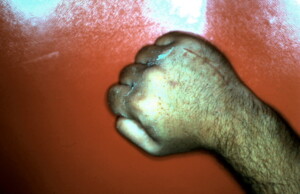 Full flexion has already been obtained by the time casting would just have been discontinued if non-operative treatment was carried out.
Full flexion has already been obtained by the time casting would just have been discontinued if non-operative treatment was carried out.




